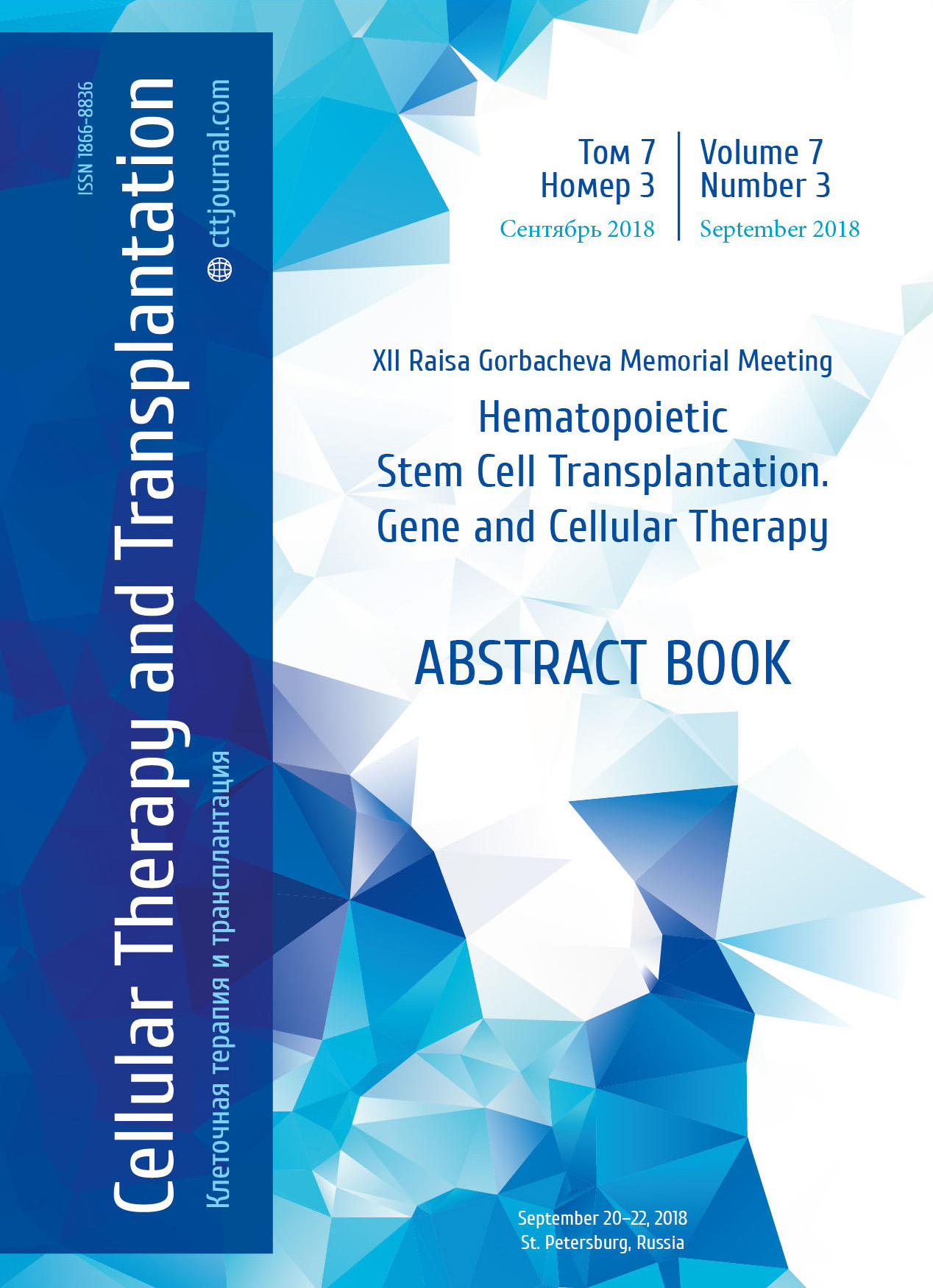Comparative in vitro analysis of human NK-cell lines expressing chimeric antigen receptors
2 Novosibirsk State University, Novosibirsk, Russia
3 Institute of Chemical Biology and Fundamental Medicine SB RAS, Novosibirsk, Russia
Summary
Introduction
CAR T cell therapy received regulatory approval for treatment of pediatric r/rALL patients in August, 2017. Despite impressive efficacy, widespread use of CAR T cell therapy is limited by prohibitively high costs, complex standardization procedures, as well as by inherent difficulties to produce CAR T cell products for certain groups of patients. Moving CAR T cell therapy from autologous to allogeneic format appears highly attractive, yet challenging, as current techniques of cell sorting and genome engineering may do not entirely eliminate the risk of GvHD. Choosing immortalized human NK-cell lines over T cells as CAR carriers offers a possible solution to this problem. Such cell lines are inexpensive to maintain, they do not cause GvHD, and are straightforward to standardize. Several human NK-cell lines have been described to date, however no side-by-side comparisons of activity of such cells engineered to express CARs have been performed.
Methods
In this study, three immortalized human NK-cell line backgrounds (A, B, and NK-92) were used to establish sublines expressing a CD20-specific CAR. In vitro cytotoxicity assays of parental and CAR-expressing cells against CD20-positive Burkitt lymphoma target cells (Raji) were performed. Alternative target cells (HEK293T(CD20+)) and non-target isogenic controls (HEK293T) were also included into cytotoxicity tests.
Results
All the three CAR-NK cell lines obtained displayed pronounced cytotoxicity against Raji target cells, however this cell line was also highly sensitive to killing by unmodified parental NK-92 cells. Thus, in order to perform side-by-side comparisons of CAR-NK cell activity in vitro, we established HEK293T cells overexpressing CD20, as the target cell line. The level of non-specific cytotoxicity of parental NK-cell lines against HEK293T(CD20+) cells was below 20% across the E:T ratios ranging from 1 to 5, whereas specific CAR-mediated cytotoxicity at E:T=5 constituted 73% (CAR-NK-92), 55% (CAR-B), and 34% (CAR-A).
Conclusion
All the CAR-NK cell lines obtained in this study display significant cell killing activity towards target cells in vitro, with NK-92 cell line showing the highest level of both specific and non-specific cytotoxicity. Further studies in vivo are needed to explore the safety and efficacy profiles of CAR-NK cell lines.
Acknowledgements
This work was supported by the Ministry of Education and Science of the Russian Federation, grant agreement № 14.604.21.0169 (unique project identifier RFMEFI60417X0169).
Keywords
Chimeric antigen receptors, NK-cell lines, cytotoxicity.


